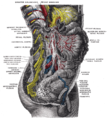
List of images in Gray's Anatomy: IX. Neurology
Encyclopedia
structure of the nervous systemNervous systemThe nervous system is an organ system containing a network of specialized cells called neurons that coordinate the actions of an animal and transmit signals between different parts of its body. In most animals the nervous system consists of two parts, central and peripheral. The central nervous...



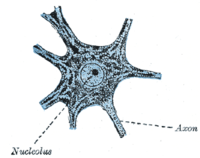
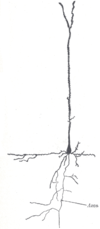
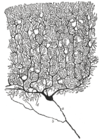






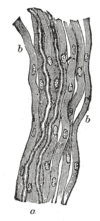




development of the nervous systemNervous systemThe nervous system is an organ system containing a network of specialized cells called neurons that coordinate the actions of an animal and transmit signals between different parts of its body. In most animals the nervous system consists of two parts, central and peripheral. The central nervous...
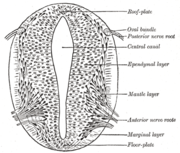

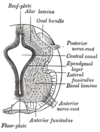
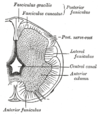

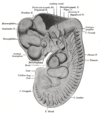
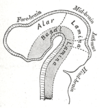




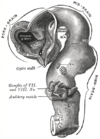









the spinal cordSpinal cordThe spinal cord is a long, thin, tubular bundle of nervous tissue and support cells that extends from the brain . The brain and spinal cord together make up the central nervous system...
or medulla spinalis
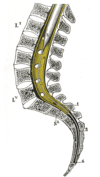

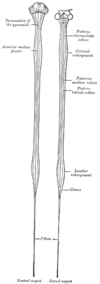







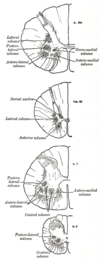


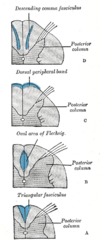

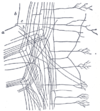
the brainBrainThe brain is the center of the nervous system in all vertebrate and most invertebrate animals—only a few primitive invertebrates such as sponges, jellyfish, sea squirts and starfishes do not have one. It is located in the head, usually close to primary sensory apparatus such as vision, hearing,...
or encephalon


the hind-brain or rhombencephalonRhombencephalonThe rhombencephalon is a developmental categorization of portions of the central nervous system in vertebrates.The rhombencephalon can be subdivided in a variable number of transversal swellings called rhombomeres...
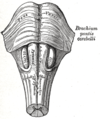












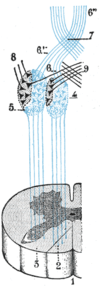
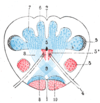


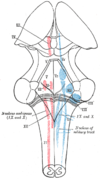
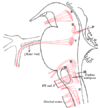
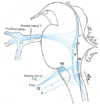


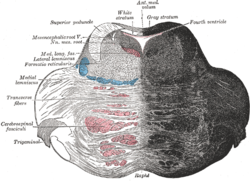








the mid-brain or mesencephalonMesencephalonThe midbrain or mesencephalon is a portion of the central nervous system associated with vision, hearing, motor control, sleep/wake, arousal , and temperature regulation....



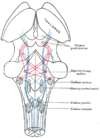

the fore-brain or prosencephalonProsencephalonIn the anatomy of the brain of vertebrates, the prosencephalon is the rostral-most portion of the brain. The prosencephalon, the mesencephalon , and rhombencephalon are the three primary portions of the brain during early development of the central nervous system...
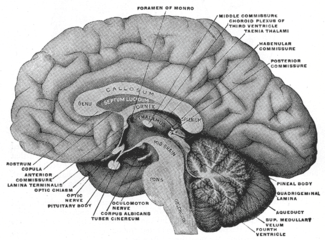
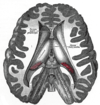
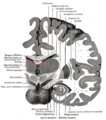
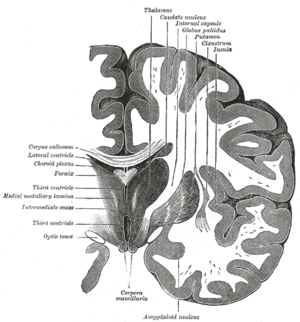
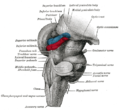


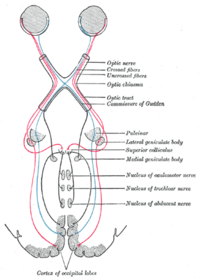

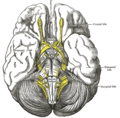

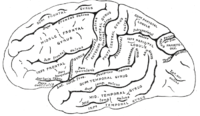






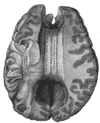

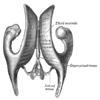

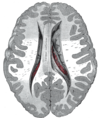


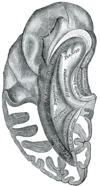
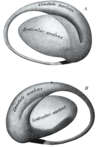
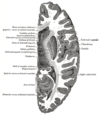

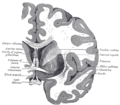








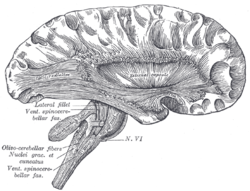




composition and central connections of the spinal nerves


composition and central connections of the cranial nervesCranial nervesCranial nerves are nerves that emerge directly from the brain, in contrast to spinal nerves, which emerge from segments of the spinal cord. In humans, there are traditionally twelve pairs of cranial nerves...



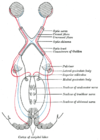
pathways from the brainBrainThe brain is the center of the nervous system in all vertebrate and most invertebrate animals—only a few primitive invertebrates such as sponges, jellyfish, sea squirts and starfishes do not have one. It is located in the head, usually close to primary sensory apparatus such as vision, hearing,...
to the spinal cordSpinal cordThe spinal cord is a long, thin, tubular bundle of nervous tissue and support cells that extends from the brain . The brain and spinal cord together make up the central nervous system...

the meningesMeningesThe meninges is the system of membranes which envelopes the central nervous system. The meninges consist of three layers: the dura mater, the arachnoid mater, and the pia mater. The primary function of the meninges and of the cerebrospinal fluid is to protect the central nervous system.-Dura...
of the brainBrainThe brain is the center of the nervous system in all vertebrate and most invertebrate animals—only a few primitive invertebrates such as sponges, jellyfish, sea squirts and starfishes do not have one. It is located in the head, usually close to primary sensory apparatus such as vision, hearing,...
and medulla spinalis


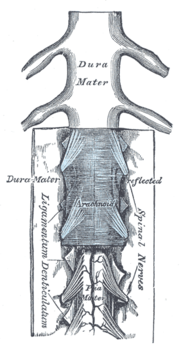



the olfactory nerves


the optic nerveOptic nerveThe optic nerve, also called cranial nerve 2, transmits visual information from the retina to the brain. Derived from the embryonic retinal ganglion cell, a diverticulum located in the diencephalon, the optic nerve doesn't regenerate after transection.-Anatomy:The optic nerve is the second of...

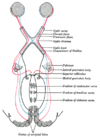
maxillary nerve



mandibular nerveMandibular nerveThe mandibular nerve is the largest of the three branches of the trigeminal nerve.-Roots:It is made up of two roots:* a large sensory root proceeding from the inferior angle of the trigeminal ganglion....
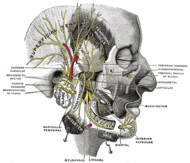


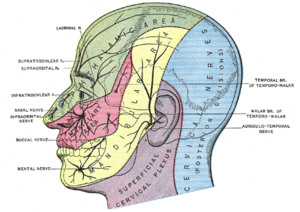
the abducent nerveAbducent nerveThe abducens nerve or abducent nerve is a somatic efferent nerve that controls the movement of a single muscle, the lateral rectus muscle of the eye, in humans. In most other mammals it also innervates the musculus retractor bulbi, which can retract the eye for protection...



the facial nerveFacial nerveThe facial nerve is the seventh of twelve paired cranial nerves. It emerges from the brainstem between the pons and the medulla, and controls the muscles of facial expression, and functions in the conveyance of taste sensations from the anterior two-thirds of the tongue and oral cavity...


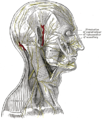
the glossopharyngeal nerveGlossopharyngeal nerveThe glossopharyngeal nerve is the ninth of twelve pairs of cranial nerves . It exits the brainstem out from the sides of the upper medulla, just rostral to the vagus nerve...
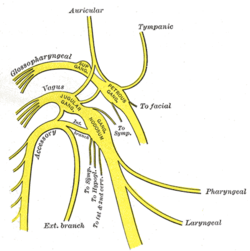
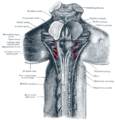

the spinal nerves
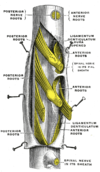



the posterior divisions

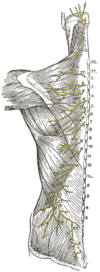


cervical plexusCervical plexusThe cervical plexus is a plexus of the ventral rami of the first four cervical spinal nerves which are located from C1 to C4 cervical segment in the neck. They are located laterally to the transverse processes between prevertebral muscles from the medial side and vertebral from lateral side...


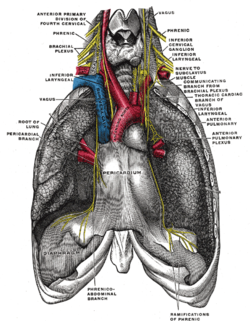
brachial plexusBrachial plexusThe brachial plexus is a network of nerve fibers, running from the spine, formed by the ventral rami of the lower four cervical and first thoracic nerve roots...

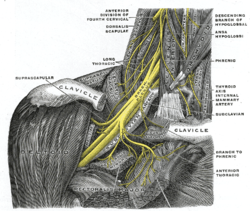


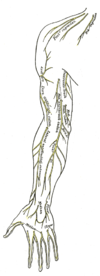



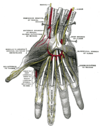
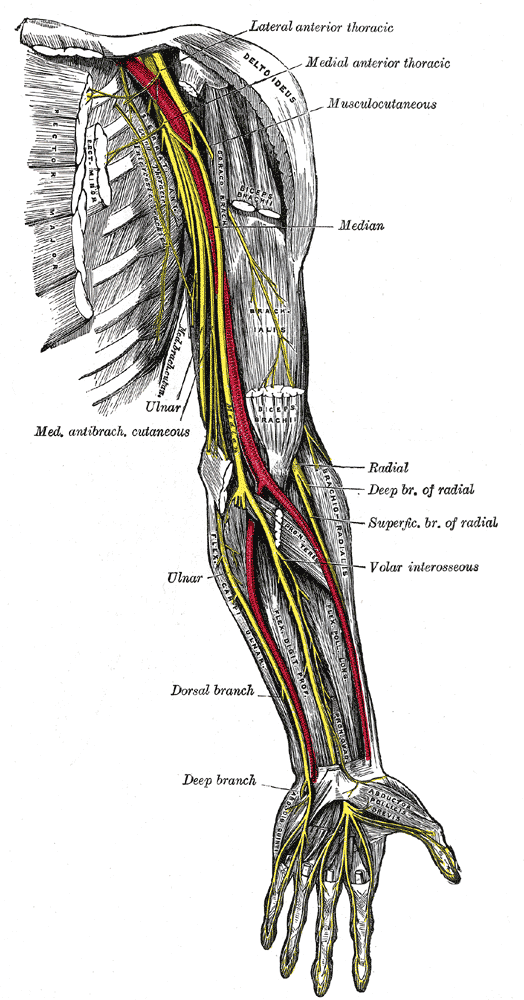
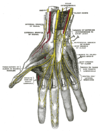

the thoracic nervesThoracic nervesThe thoracic nerves are the spinal nerves emerging from the thoracic vertebrae. Branches also exit the spine and go directly to the Sympathetic Chain Ganglia of the Autonomic Nervous System where they are involved in the functions of organs and glands in the head, neck, thorax and abdomen.-Anterior...


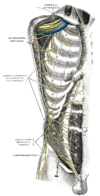
the lumbosacral plexusLumbosacral plexusThe anterior divisions of the lumbar nerves, sacral nerves, and coccygeal nerve form the lumbosacral plexus, the first lumbar nerve being frequently joined by a branch from the twelfth thoracic. For descriptive purposes this plexus is usually divided into three parts:* lumbar plexus* sacral plexus*...

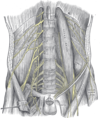
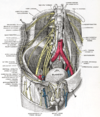


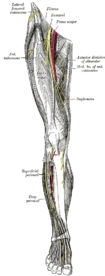
the sacralSacralSacral may refer to:*sacred*sacrum...
and coccygeal nerves
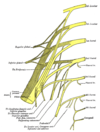
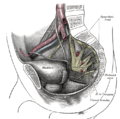
Sacral plexusSacral plexus-External links:*...




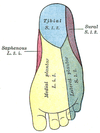
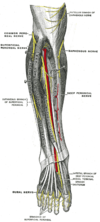
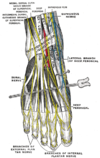
the sympathetic nerves
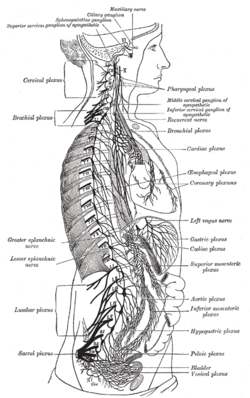
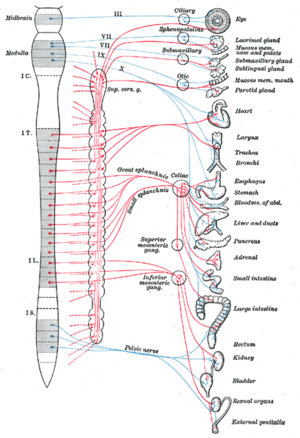



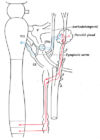
the cervicalNeckThe neck is the part of the body, on many terrestrial or secondarily aquatic vertebrates, that distinguishes the head from the torso or trunk. The adjective signifying "of the neck" is cervical .-Boner anatomy: The cervical spine:The cervical portion of the human spine comprises seven boney...
portion of the sympathetic system
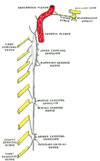

the thoracic portion of the sympathetic system

the abdominal portion of the sympathetic system
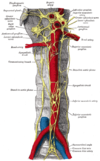
the great plexuses of the sympathetic system

